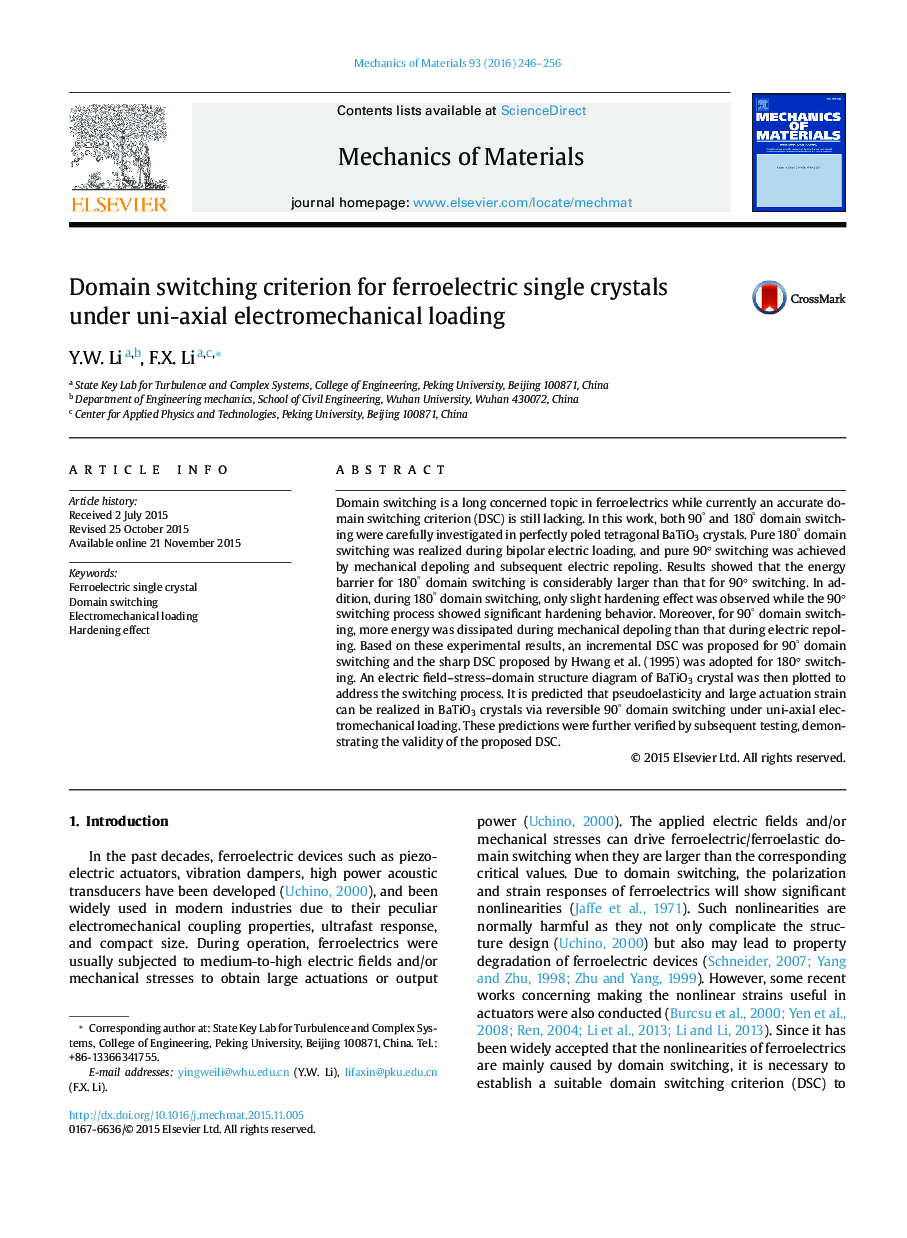| Article ID | Journal | Published Year | Pages | File Type |
|---|---|---|---|---|
| 800699 | Mechanics of Materials | 2016 | 11 Pages |
•Pure 90° and 180° domain switching was realized in BaTiO3 crystal.•Significant hardening effect appeared during 90° domain switching.•More energy was dissipated during σ loading than that during E loading.•A new incremental 90° domain switching criterion (DSW) was proposed.•Pseudoelasticity and large actuations were predicted and further verified.
Domain switching is a long concerned topic in ferroelectrics while currently an accurate domain switching criterion (DSC) is still lacking. In this work, both 90° and 180° domain switching were carefully investigated in perfectly poled tetragonal BaTiO3 crystals. Pure 180° domain switching was realized during bipolar electric loading, and pure 90° switching was achieved by mechanical depoling and subsequent electric repoling. Results showed that the energy barrier for 180° domain switching is considerably larger than that for 90° switching. In addition, during 180° domain switching, only slight hardening effect was observed while the 90° switching process showed significant hardening behavior. Moreover, for 90° domain switching, more energy was dissipated during mechanical depoling than that during electric repoling. Based on these experimental results, an incremental DSC was proposed for 90° domain switching and the sharp DSC proposed by Hwang et al. (1995) was adopted for 180° switching. An electric field–stress–domain structure diagram of BaTiO3 crystal was then plotted to address the switching process. It is predicted that pseudoelasticity and large actuation strain can be realized in BaTiO3 crystals via reversible 90° domain switching under uni-axial electromechanical loading. These predictions were further verified by subsequent testing, demonstrating the validity of the proposed DSC.
